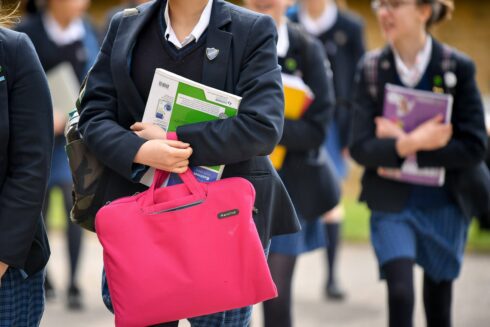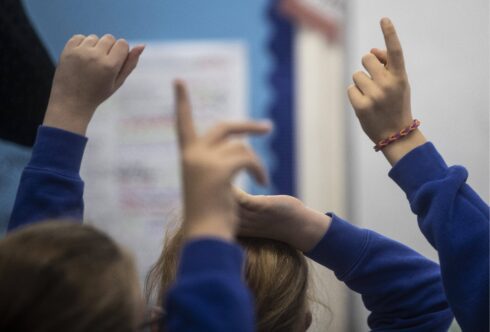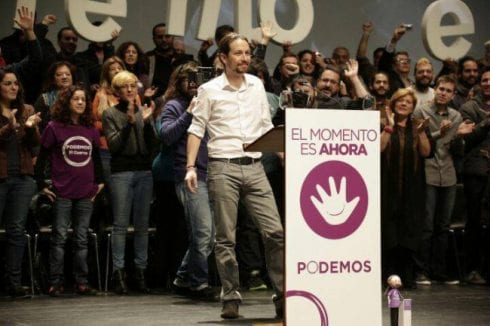THERE’S no denying it, upping sticks and moving you, your partner, the kids and even the family dog to Spain is one of the biggest decisions of your life.
And when you arrive in ‘the land of the three Ss’ – sun, sea and sangria – there’s still a far more important decision to make: where your youngsters will learn the three Rs.
On the Costa del Sol, negotiating the interactive whiteboard jungle – blackboards are old hat – is an even tougher call, as you’ll be spoiled for choice.
Of course your selection will depend on certain key factors: distance from home, budget, academic standards, teaching style and word-of-mouth recommendations, to name just a few.
So where do you start?
The first item on your checklist should be Public or Private – do you opt for a Spanish state school or an international college?
It’s generally an easier decision to make for younger children, as primary schools throughout Europe are more or less comparable.
Around 80% of expats send their children to the local state schools – called ‘colegios’ for primary schools and ‘institutos’ for secondary schools.
There are two serious advantages to Spanish schools. The first is that children will learn Spanish fast and should integrate well into their new home country.
Younger children, in general, thrive in state schools, with youngsters under nine normally picking up impressive spoken Spanish (usually, far better than their parents’ Spanish) within a year, just by socialising with their Spanish friends.
The majority of foreign parents and students find that integration with other nationalities is normally handled with skill and consideration.
The second key advantage is that state schooling is free of charge from the age of three, when children can begin attending infantile or pre-escolar, equivalent to a nursery in the UK. The only costs you’ll have to cover are books, school trips and, if the school has them, uniforms.
There are, however, downsides to Spanish schools, particularly if your child is older or more timid.
There are sad – but by no means common – stories of the 11-plus ‘guiris’ being ignored by their teachers and bullied by their classmates, or finding themselves left entirely untutored.
Older children with limited Spanish can often have trouble adjusting, finding the move to a different country combined with schooling in a language that might as well be Greek to them way too much to cope with. Learning maths and physics in a foreign idiom isn’t for sissies!
It is definitely worth considering extra language tuition outside school hours to help ease the transition. Budget for up to €20 per hour for private lessons. Your child will not only be more able to keep up with lessons, but is far more likely to make friends if they can socialise in the same language.
“It is fine if you get the kids into school early at a young age, but if they are nine or 10 then they will find it harder,” advised one English parent, whose two children have been through the local system in Manilva.
“They will almost certainly need some extra tuition and watching carefully. It also helps if the parents get involved in the school and try to get to know the other Spanish parents. Joining the parents/teachers association certainly helps.”
If you decide against the Spanish state system, either because you fear the educational standards will be low (according to reports, Andalucia does indeed come well below average), or because you prefer to have your children educated in English, then you will have no choice but to go private.
Budget is a major consideration but many expat parents find that choosing an international school gives their child a gentler introduction to schooling in a foreign country, with smaller classes taught in English.
Most international schools even follow a UK curriculum, with GCSE and A-levels, with a number of local schools regularly getting kids into the top British universities, including Oxbridge.
International schools have very different personalities and philosophies, and it’s very much a matter of personal preference. But with more than two dozen on the Costa del Sol alone, there are more than enough to choose from.
Marbella – with more than 40,000 foreigners living in the town – has the largest concentration of international schools, after Madrid and Barcelona. And Malaga, Mijas, Fuengirola, Benalmadena, Estepona, Almunecar and Sotogrande all have their own options.
The rise of international schools in Spain can be traced back to former dictator General Franco, who introduced tourism to the Costa del Sol. Since then, a torrent of foreign visitors settling along the coast has turned it into a melting pot of cultures, providing endless opportunities for education start-ups.
British schools are now said to account for two-thirds of the international schools on the coast.
The oldest is Swans International School, established in 1971, and named after its legendary headmistress and founder, Tessa Swan.
Others include Sotogrande – established in 1978 – and Aloha College, which dates back to 1982.
The most recent newcomer to the blackboard jungle is the British School of Marbella, which opened in September 2010, and has already become a popular and well-established feature of the coast’s school community. Indeed, it is soon to expand to new, bigger pastures.
Most British schools are members of the National Association of British Schools in Spain (NABSS) and are inspected regularly by the group, a set-up similar to the UK’s Ofsted inspections.
A great advantage for many parents is that international schools often have a more multicultural environment than state schools, with most having more than 20 different nationalities attending and offering a bilingual study programme.
Paul Kelly, an education consultant and former headmaster of Mayfair Academy in Marbella – which has 20-30% Spanish pupils – said: “Pupils meet other students from so many different countries.
“This is such a valuable opportunity as it awakens a curiosity for other cultures, languages, traditions, customs and even food from a very early age.”
To tie in with this, many of the top schools are increasingly offering the International Baccalaureate (IB) programme, as well as the local secondary school qualification, the Bachillerato.
The IB – which may be unknown to some English readers – is the normal route to university for European students.
The main difference is that IB students take six or seven subjects – which often include elements of community work and public-speaking – as opposed to just three or four at A-level.
Catherine Davies, head of Swans in Marbella, said: “You can go anywhere in the world with an international education, it’s like an international currency.”
As well as a more up-to-date, relaxed approach to teaching, international schools are generally considered to offer a better learning environment.
The most obvious downside, of course, is the cost. Schools range from basic to luxurious but, take note, they come with fees to match.
Fees range from €3,000 a year for primary school to between €6,000 and €17,000 per year for secondary schools. This generally does not include the cost of books, school trips or uniforms.
A further downside is that children may find themselves in something of a Spanish vacuum, unable to integrate with the local community outside the classroom.
But international schools are beginning to fight this effect, with many more Spanish extra-curricula activities available, and more access to local culture on school trips.
Many of the schools also include Spanish offerings such as flamenco dancing classes after school finishes.
Swans also makes a huge effort to introduce their foreign students to Spanish culture.
“We have a strong Spanish representation here, and always get our other nationalities more involved in Spanish life,” said Chris French, Head of Business and Economics.
“While they’re with us, we take them to Granada and Sevilla and places, to get them more in touch with the lifestyle.”
Education consultant Paul Kelly concluded: “Effort and attitude varies considerably from family to family. Some are content never to venture into ‘Spanish’ situations, while others make every effort to integrate, join sports clubs etc. and have much more exposure to the language.”
No guide can decide your child’s education for you, and there is no easy answer. Choosing a school in Spain is as much a personal choice as in any other country, whether your biggest consideration is cost, integration or a smoother transition.
Just one final tip for parents who decide to go with the Spanish system: learn the language yourself. How else will you chat to your kids’ teachers at open days? And, more important for your kids than that, how will you help them with their homework!











